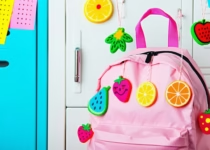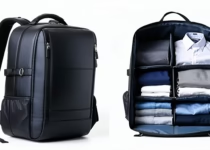Transitioning From Middle School To High School: New Backpack Needs

When you’re transitioning from middle school to high school new backpack needs can feel overwhelming, so let’s simplify it together. You’re starting a fresh chapter—more classes, heavier textbooks, extracurricular gear—so your backpack should work as hard as you do.
In this guide, you’ll learn how to assess what really matters, choose the right fit, stay comfy on those long walks between classes, and keep everything organized (yes, even your chargers and snack stash). By the end, you’ll have a backpack strategy that lets you focus on what counts: acing that first semester.
Assess Your Backpack Needs
Moving up to high school brings new demands. Start by mapping out exactly what you’ll carry day to day.
Consider Your Course Load
- Count your core classes (math, science, English). Heavy textbooks need roomy compartments.
- Include electives like art or shop—those sketchpads or safety goggles take space.
- Think ahead to lab days or group projects that may require extra binders.
Think About Extra Activities
You’re part of the soccer team or drama club? Factor in:
- Uniforms or props
- Water bottles
- Spare shoes
Plan For Tech Gear
From tablets to earbuds and cables, you need a safe spot for gadgets. Try these tips:
- Use a padded sleeve or dedicated tech pocket
- Label cords in a small pouch so they don’t tangle
- Check out our guide on organizing earbuds and small tech in teen backpacks for pro tricks
Choose The Right Size
A too-big pack sags, a too-small one bulges—finding that sweet spot is key.
Match Backpack Dimensions To High School
High schools often have lockers or cubbies. Aim for:
- Medium size (20–25 liters) to fit binders without overstuffing
- Slim profile to slide into lockers easily
| Grade Level | Suggested Capacity | Fits In Locker? |
|---|---|---|
| Freshman | 20 L | Yes |
| Sophomore | 22 L | Yes |
| Junior/Senior | 25 L | Maybe |
Evaluate Compartment Layout
Look for:
- Separate laptop/tablet sleeve
- Front pocket for pens and phone
- Side mesh pockets for water bottles
Prioritize Comfort Features
You’ll haul this pack daily, so comfort matters almost as much as style.
Back Panel And Straps
A cushioned back panel and adjustable straps prevent soreness. Compare options in our breathable mesh vs padded back panels for teenage backpacks post.
Weight Distribution
A waist or sternum strap helps balance weight. Distribute heavier items close to your back to ease shoulder stress.
Ventilation
Look for ventilated zones or airflow channels that reduce sweat on warm days.
| Feature | Benefit | Learn More |
|---|---|---|
| Mesh Back Panel | Keeps you cool | breathable vs padded info |
| Sternum Strap | Stabilizes load | — |
| Padded Shoulder | Reduces shoulder pressure | — |
Organize Essentials Efficiently
Being organized means less scrambling when class starts in five minutes flat.
Core School Supplies
- Use a vertical file folder for loose papers
- Keep pens, highlighters, and sticky notes in small zip pouches
Tech And Cables
- Store chargers in a dedicated pouch
- Wrap earbuds around a carabiner or cable organizer
Snacks And Hydration
You deserve brain fuel between classes:
- Grab a snack pocket or pouch
- Carry a refillable water bottle in a side sleeve
Use Color Coding
Try color-coding notebooks or pouches for each subject. Our using color-coding inside a teen backpack for better organization guide shows how.
Customize For Your Style
Your backpack says something about you—make it count.
Color And Patterns
Pick a shade that resonates with your vibe, whether it’s pastel, graphic prints, or bold solids. Remember: darker colors hide scuffs better.
Pockets And Charms
Add charm lanyards or keychains for flair. Just be sure they don’t snag fabric—learn more in adding charm lanyards without damaging backpack fabric.
Personal Touches
- Sew on a patch or pin
- Clip on a mini compass or flash drive
Maintain And Care
A little upkeep goes a long way in protecting your investment.
Cleaning And Protection
- Spot-clean with mild soap and water
- Air-dry fully before storing to prevent mildew
- Consider a waterproof spray for rainy days
Quick Fixes
Broken zippers or loose seams? You’ve got this:
- Use a graphite pencil on a stuck zipper
- Sew or fabric-glue small tears
- See quick fixes for broken zippers in teenage backpacks if you need more help
FAQs
What size backpack is best for high school?
Aim for 20–25 liters so binders and tech fit without bulging.How can I keep heavy textbooks from digging into my shoulders?
Use a sternum or waist strap and place heavier items closest to your back.Can I add a lunchbox inside my backpack?
Yes, pick a slim insulated bag or use a built-in insulated pocket.What’s the best way to protect my laptop or tablet?
Choose a pack with a padded sleeve or add a firm collapsible laptop insert.How do I keep papers from bending or tearing?
Store loose worksheets in a vertical file folder or a rigid binder.Should I clean my backpack regularly?
Spot-clean weekly and deep-clean every month if you carry snacks or gym clothes.What’s the easiest way to personalize my pack?
Clips, pins, patches, or fabric markers let you update style as trends change.
Conclusion
Picking your high school backpack is part practical, part personal—and totally worth the effort. With the right size, comfort features, and organization tricks, you’ll breeze through your first weeks feeling prepared and confident.
Now that you’ve got the lowdown, go ahead and scout your options. Your perfect backpack is out there—ready to help you own that high school experience.


